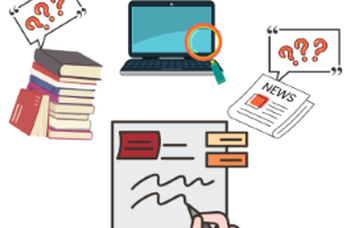Ethical use of literature
Ethical use of literature - reference, creating a bibliography

During your studies, you will have to write assignments, essays or thesises several times.
It is important to use the collected literature ethically in any material you create.
What do we mean by ethics?
In the case of a written work, the literature used must always be indicated. The source must always be given in the case of methods, data, ideas or quotations.
Reference
In the case of academic texts, it is mandatory to indicate the source of the ideas used – even if it paraphrases or summarises the author's statements, in which case quotation marks are not necessary. Failing to do so is an ethical offence, plagiarism, and will result in disciplinary action in any submitted paper.
Types of reference
- Verbatim quotation
- The quoted text should be enclosed in quotation marks.
- The in-text reference should be used with the exact page number.
- Reflections
- Do not use quotation marks in the text.
- The in-text citation should be used at the end of the quoted passage. It is also recommended to indicate the page number of the text.
- Reference in the text
- Brief reference to the source in the text.
- Works or extracts cited or quoted should be referred to in the text using the chosen citation style or numbering
Bibliography
The literature used for the preparation of the thesis must be listed at the end of the thesis in a uniform bibliography. Documents should be arranged alphabetically by the authors’ surnames.
The bibliography starts on a new page, entitled Literature / Literature used / Bibliography.
Different information should be included in the bibliography for each type of document:
- book – author/editor, title, place of publication, name of publisher, year of publication, page numbers
- chapter or book excerpt – author, title of the chapter/book excerpt IN author/editor: title of the book, place of publication, name of publisher, year of publication, length of the book excerpt
- journal article – author, title of the article IN title of the journal, year of publication, volume number, issue number, length of article
- electronic document – author, title of document (document type). year of publication. date of viewed/downloaded
The order of the data depends on which referencing style you use.
Use of citation styles
In the next section, the use of three citation styles will be discussed. The examples illustrate the most common cases and document types. If you are using a source of information for which you have not found an example, please refer to the official pages at the end of each style for a full description of that style.

